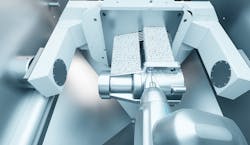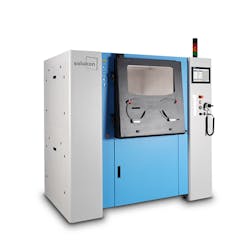Additive manufacturing (AM), commonly referred to as 3D printing, has seen double digit growth for several years now, and seems to be showing no sign of slowing down. According to Grand View Research, the 3D printing industry is anticipated to expand at a compound annual growth rate of 21% from 2021 to 2028. Moreover, a 2021 research report from Industrial AM service provider Essentium found that use of 3D printing has doubled in the past year alone.
This growth comes as new AM methods such as liquid metal jet printing (LMJP) help to improve the structural integrity of 3D-printed objects while also lowering post-processing costs.
However, many companies will continue to use more established AM methods, such as selective laser melting (SLM), that require post-processing procedures.
A new partnership between Festo and Solukon—a company specializing in industrial powder removal—aims to solve the post-processing problem of de-powdering 3D-printed parts. De-powdering is usually the first step of post-processing 3D-printed objects and involves the removal of excess materials that have not been fully fused into the structure of a finished item. Typically, de-powdering can be carried out using manual processes, but this can be costly and time-consuming. By contrast, Solukon’s Smart Powder Recuperation (SPR) system removes particle residue from 3D-printed components by using automated swiveling motions and vibration at calibrated frequencies.Still, with industries such as aerospace and automotive using AM to produce ever larger and more complex components, the automated de-powdering systems currently available may be unable to accommodate their sizes and shapes. To surmount this issue, Festo and Solukon are designing a more adaptive handling system—using artificial intelligence and computer-aided design data—to flexibly adapt the SPR’s motion profile to the changing contours of various parts.
According to Felix Hantsch, project manager in the innovation and robotics cluster at Festo, the deployment of these more flexible automated handling systems for de-powdering could help develop reproducible processes that are faster and more precise, allowing manual rework to be eliminated. This can significantly cut costs for manufacturers producing varied batch sizes.
“Up to now, we have not taken advantage of the potential of automation in many process steps,” Hantsch said. “We therefore see these innovative automation approaches as great opportunities for the future topic of [3D printing].”


